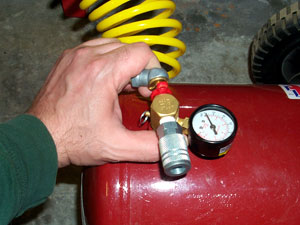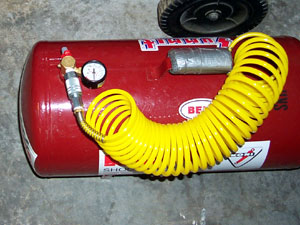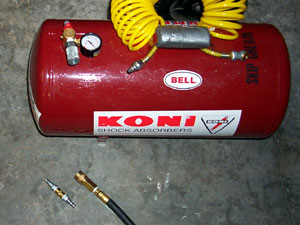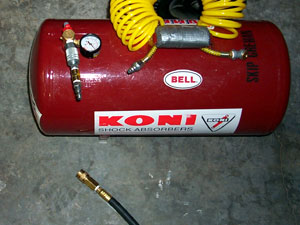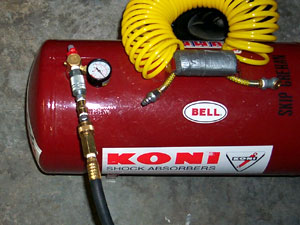|
|
|
Portable air tank tips Last Updated: 11/16/2010 |
|
Author: Skip
Go ahead and laugh, but if this helps just one person... Many of us have the small portable air tanks for various tasks, most for quick racing tire pressure changes. Frustrated by the amount of time and work it was to fill my tank using the "conventional" method I found the common-sense answer. Honestly, it's only a matter time before anyone would figure this out... I'm quite certain I am not the first. If you are filling your tank from a compressor, this may help. Details: Most portable air tanks use a standard needle valve to fill from. This is the same type as used on tires, tubes, etc. The process of filling my 10-gallon tank included holding the inflator to the tank for approximately 3 minutes. This doesn't sound like very long until you do it. Parts: The only drawback is that you will require some additional parts - they are very inexpensive. - one female air fitting (not needed if tank is already configured as mine) Procedure: Good Luck! Credits: Skip Grehan |


